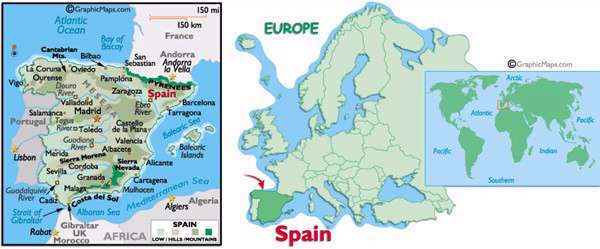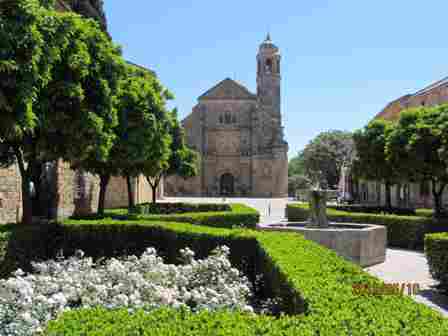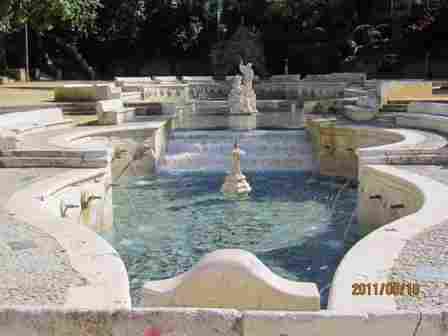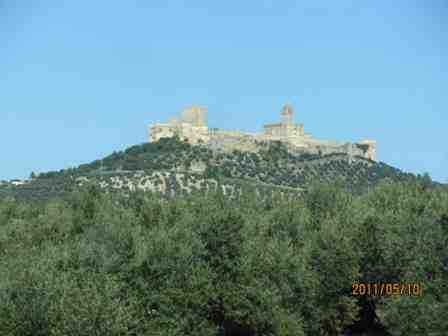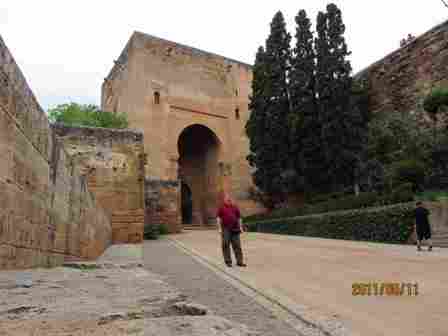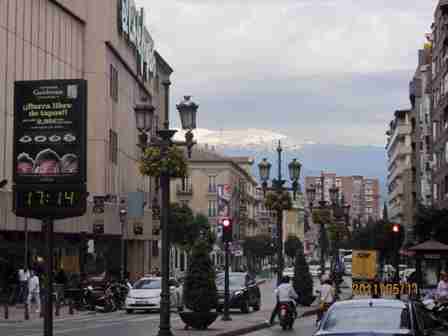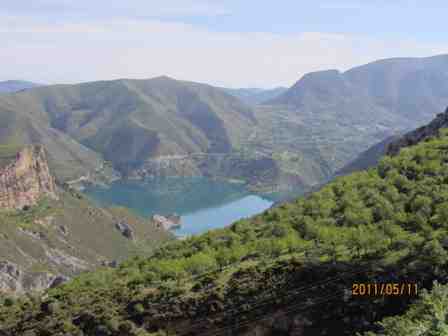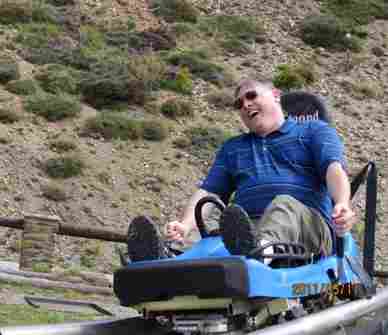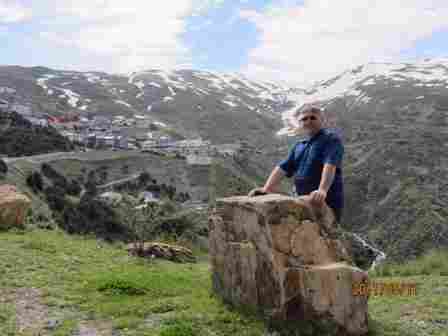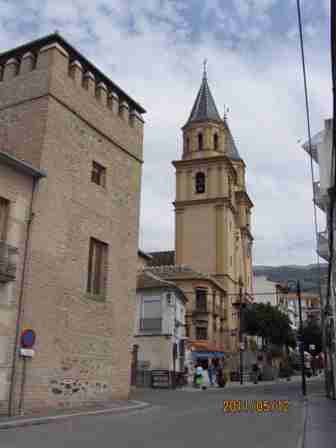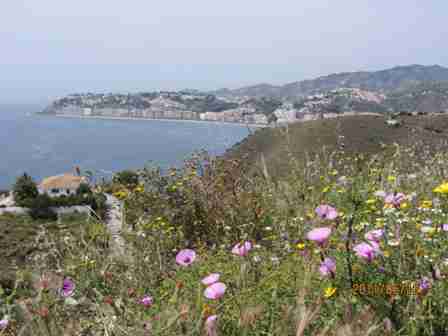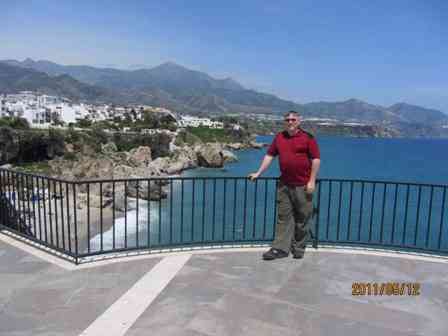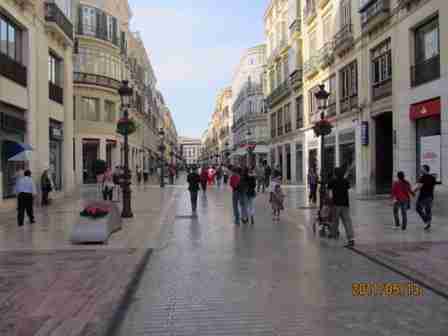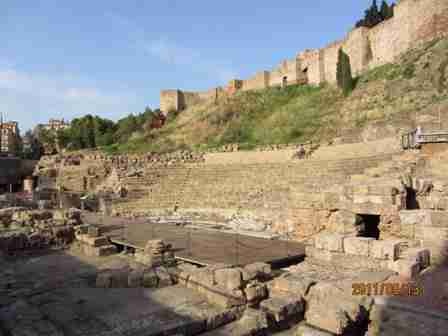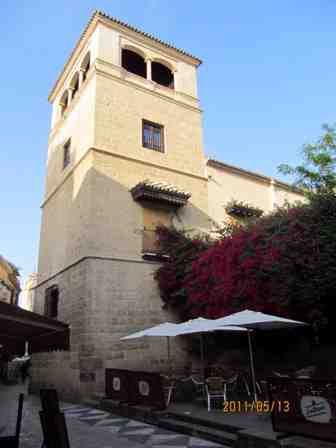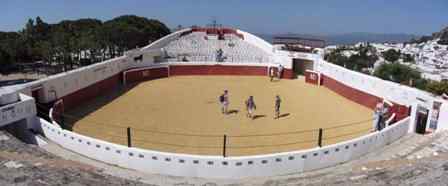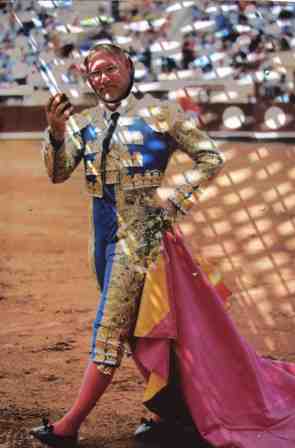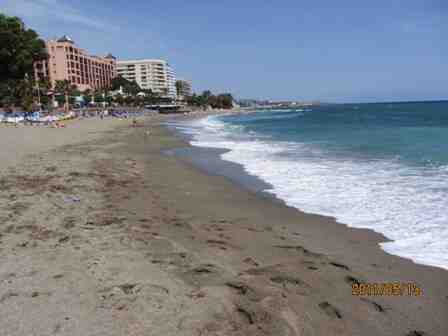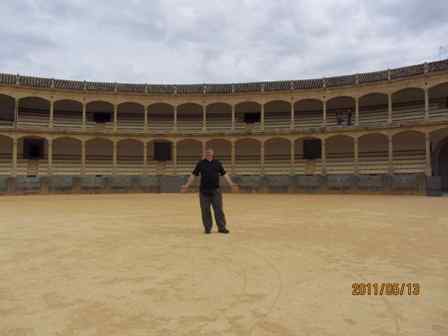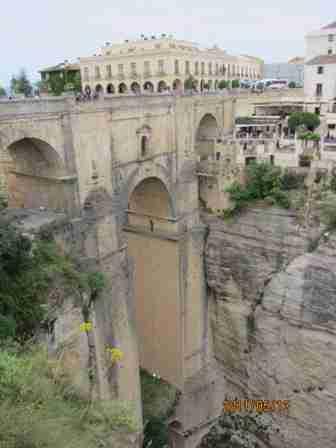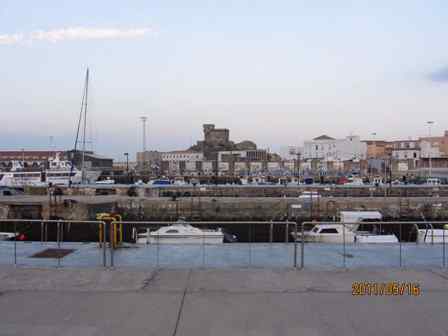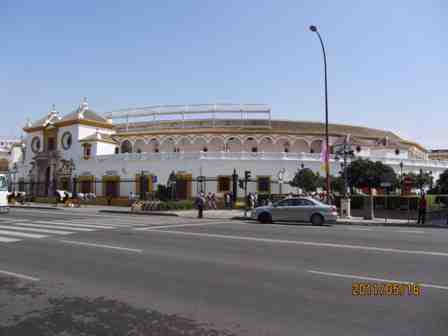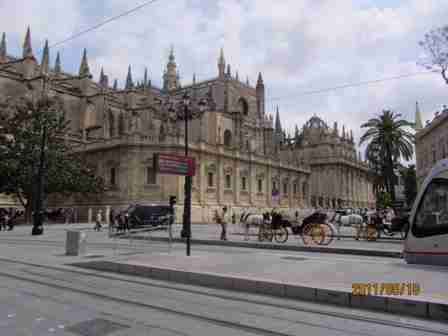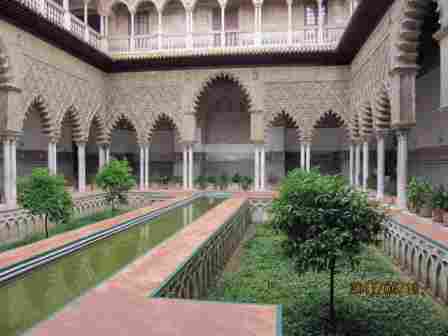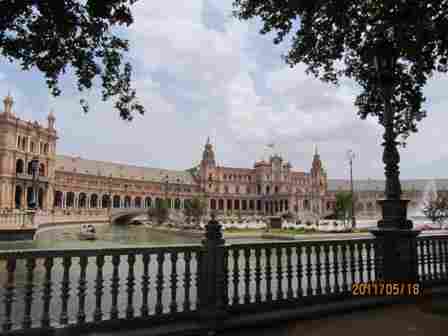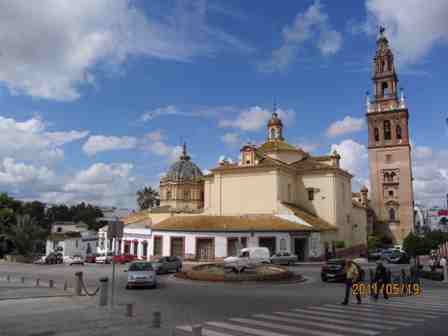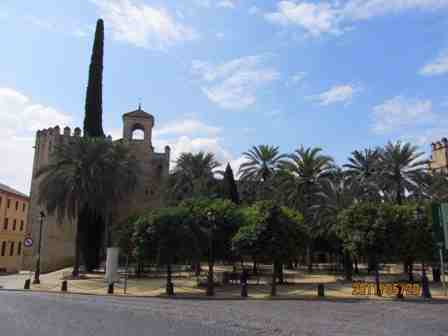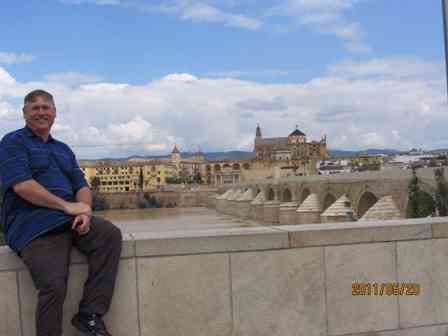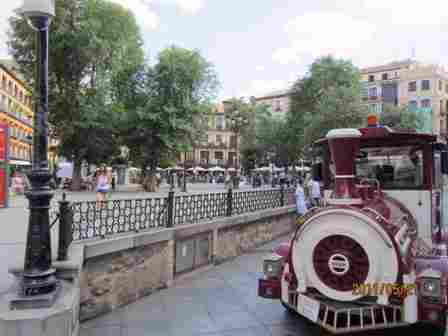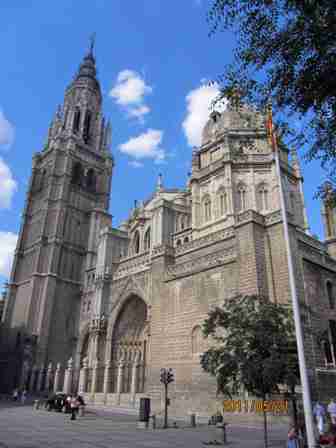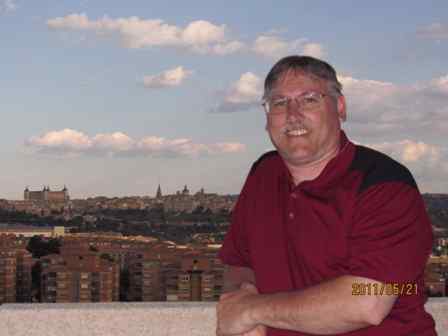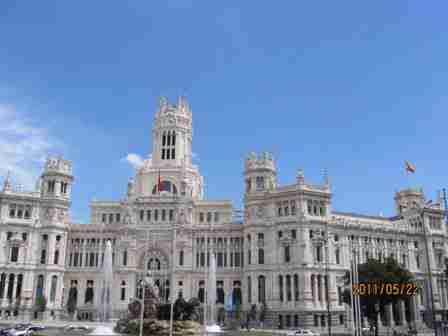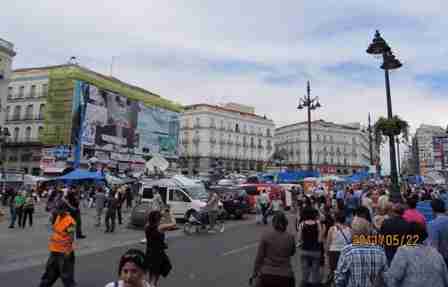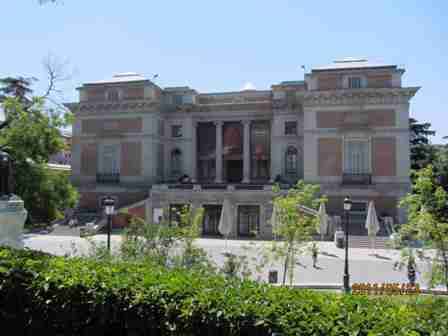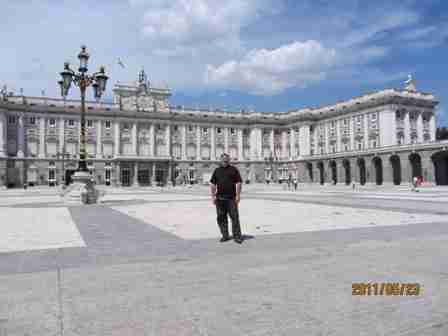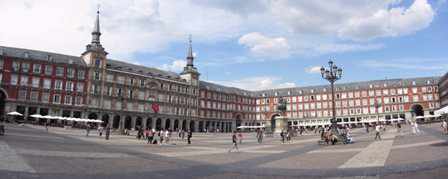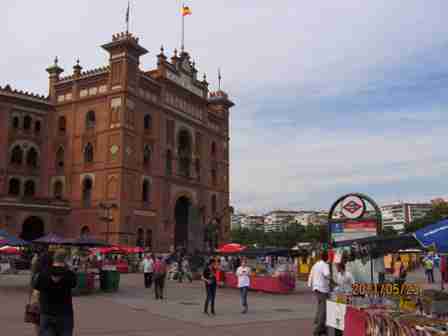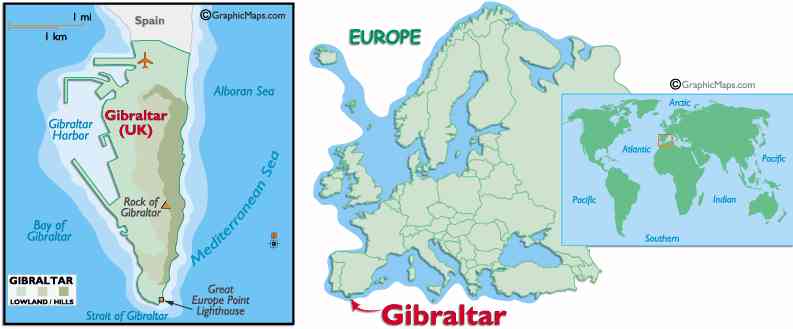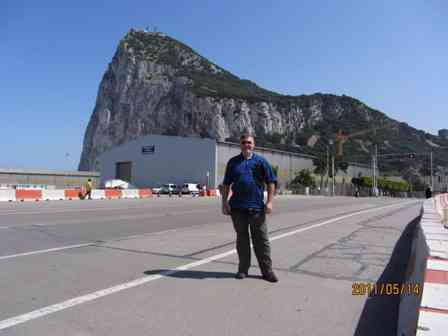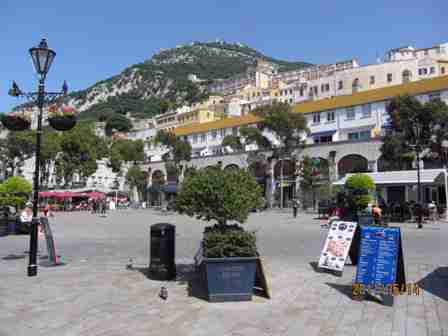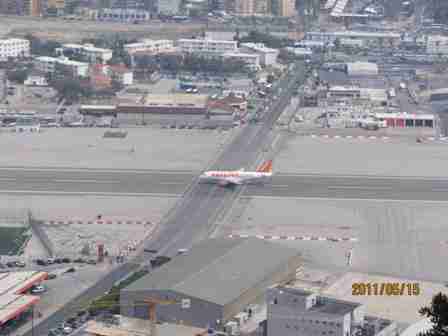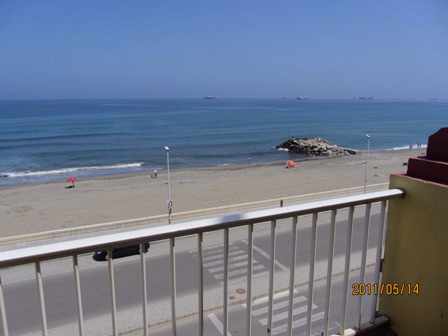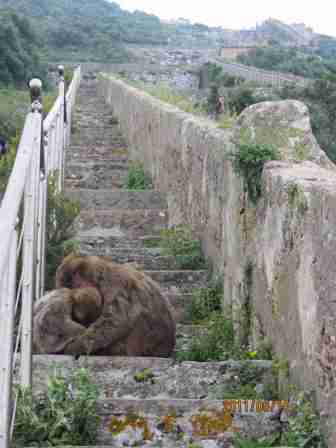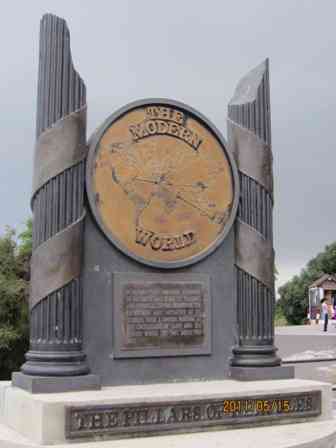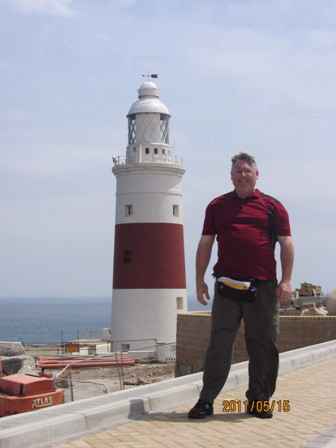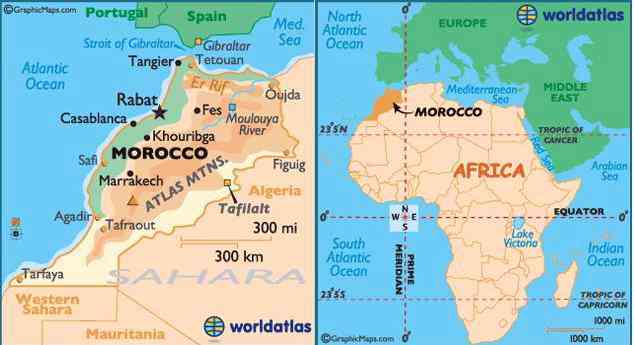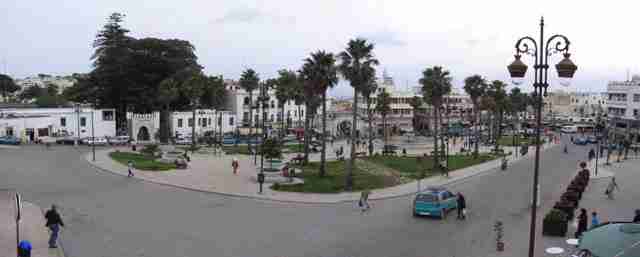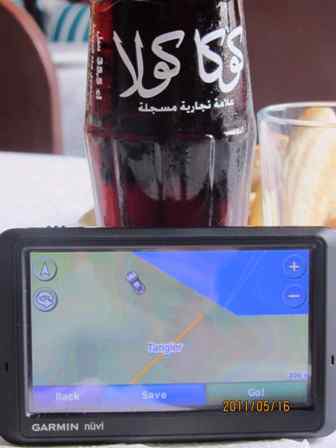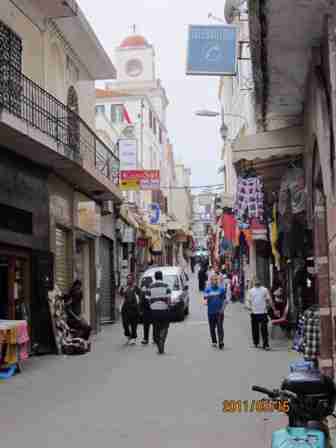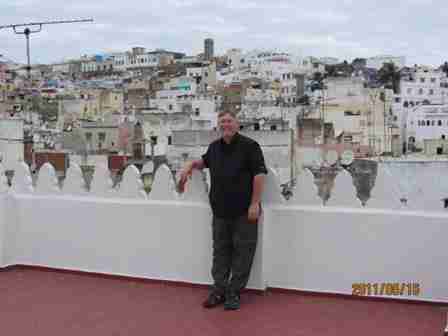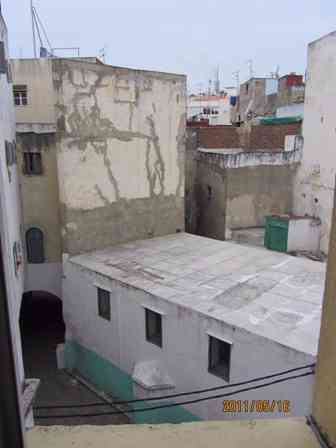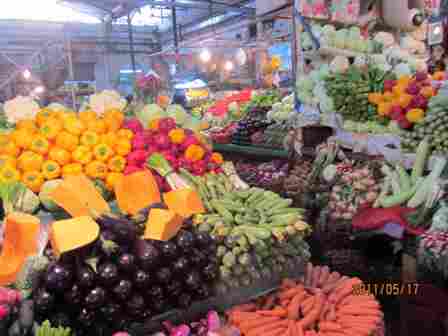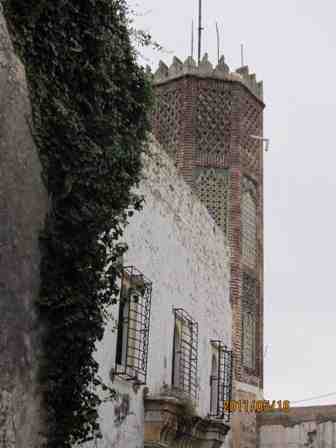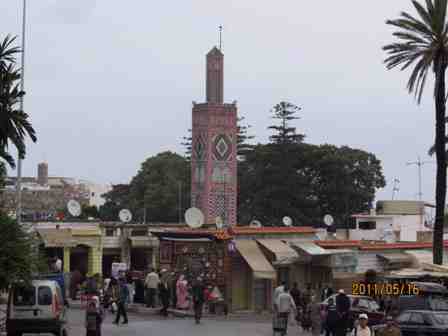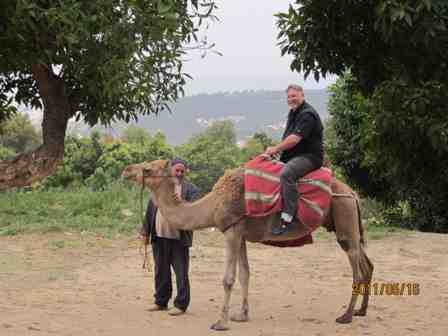In May 2011 I flew to Madrid, Spain. Since I was planning on spending the last couple days of my trip to see Madrid, I left Madrid with a plan to do a loop drive in Southern Spain. Many of the places I wanted to see in Spain were in the southern portion known as Andalusia and the Costa del Sol (The Sunshine Coast). While down that far south in the tip of Spain, I couldn’t pass up seeing a bit of Jolly Old England and going to Gibraltar. Also just a short ferry ride across the Straits of Gibraltar would take me to Morocco in North Africa, my first venture onto that continent. There was going to be a lot of things along the way before getting back to Madrid.
While driving in Spain, one of the things that struck me was how many hotels there were. Normally in Europe, it is sometimes hard to locate a hotel. They just don’t advertise with big billboards and they normally are not visible right off the road. I only mention this since I had booked all my hotels for this trip ahead of time and I thought it very unusual that I could have actually stayed anywhere I wanted because of how easy it was to locate a hotel.
One of the first places in Andalusia I stopped at was the town of Úbeda. Surrounded by olive groves, this small town has many 16th century buildings including the Palacio (Palace) de Vela de los Cobos, Palacio de las Cadenas (House of Chains), Ayuntamiento Antiguo (Old Town Hall), and the Sacra Capilla de El Salvador.
With the majestic Sierra Nevada Mountains for a backdrop, Granada has its own set of hill tops to conquer. While Granada has a couple palaces to explore, the high light is Alhambra (The Red Citadel). Alhambra is Spain’s most popular attraction, with over 2 million visitors a year. It’s a sprawling royal residence surrounded by massive towers and defensive walls with views that overlook the city. Since Granada has everything a city could provide, I used this as a jumping off point for the area. This included venturing into the Sierra Nevada Mountains just to the south.
Heading further south from Granada, you drive Europe’s highest road through the Sierra Nevada Parque Nacional to the town of Pradollano (commonly referred to as Sierra Nevada) at 2,400 metres (about 7,900 feet). While the entire drive can be done in about an hour (one way), you need to also consider time for stopping since it has incredible mountain views, reflective lakes, and other scenery worth stopping for to enjoy. This truly was an outdoor day. In this region are 2 of Spain’s highest peaks, Pico de Veleta (11,125 feet) and Mulhacén (11,427 feet). At the southern most edge of the Sierra Nevada you enter the Costa del Sol region. 'You can swim in the morning and then in the afternoon you can drive up into the mountains and ski. It must be rather tiring.'
The Costa del Sol (The Sunshine Coast) in Spain along the Mediterranean Sea averages about 320 days of sun per year. Consequently, it is a very popular destination and even this time of year, the weather was very nice and warm. My first stop on the Mediterranean was the town of Almuñécar. Having been ‘land locked’ on the trip so far, the road just sort of flowed into the Mediterranean and I remember seeing the water, the coastline, the sand, and the town just opening up before me. To think, I thought that was spectacular but I didn’t know what was coming next.
The town of Nerja has a small old town, and it is wonderful for walking around in. It has small shops (of the gift and ice cream variety) as well as an assortment of restaurants. It really is pretty unto itself. However, just off the old town central square is truly the highlight of Nerja, the Balcón de Europa (Balcony of Europe). This tree-lined promenade stretches out into the Mediterranean, providing for spectacular views of the entire surrounding area. You can sit and watch the tourists, enjoy the scenery, write postcards, have an ice cream, or you can do all of the above (like I did) before moving on.
Málaga is a large port city of about 550,000 people, however many of the sites are centrally located. The strange thing about this town was that it reminded me of being in a tiny version of Paris, mostly because of the architecture. Because of the importance of this city, it has an Alcazaba (a fortress) built starting in the 8th century and also Málaga’s Gibralfaro (castle) built in the 14th century overlooking the city. Next to the Alcazaba are the ruins of Teatro Romano (Roman Theater). Málaga also is the birthplace of Pablo Picasso (born 1881), where his boyhood home is now a museum.
Detouring slightly away and up from the coast takes you to the small town of Mijas. It has one of the few square bullrings in Spain (I think that’s to confuse the bulls). It has many white washed buildings reminiscent of the Spanish Hill Towns, and in fact it is perched on a cliff with a view down to the Mediterranean Sea.
Heading back to sea level and not far away is the larger town of Marbella. While it might not have the charm of a small town, it has more glitz and glamour. Between the beach and the shops, there is a long beautifully landscaped pathway that makes it very relaxed and comfortable to walk along. You can stop at any point and sit down to enjoy something to eat or drink while still enjoying the view. Not to be missed is the Casco Antiguo (Old Town) and the Plaza de los Naranjos (Orange Square), with its tables covered with brightly colored orange umbrellas. Although, I think the name of the square has more to do with the abundance of fragrant orange trees that fill the square.
About 30 miles north and inland of Marbella is the Spanish whitewashed hill town of Ronda. Ronda is one of the oldest towns in Spain and has many historic sites as well as panoramic views across ravines and valleys. A short walk from the Plaza de Toros (bull ring) provides for 2 dramatic views. The Alameda del Tajo gardens provide a cliff top walk overlooking the valley below and views of many buildings in Ronda perched precariously on the cliffs (hence, hill top town). Just off the Plaza de España is the Puente Nuevo (New Bridge) completed in 1793. The Puente Nuevo spans a 360 feet deep and 210 feet across ravine known as El Tajo. Because of the history and beautiful panoramas in this small town (about 37,000 people) there are waves of tourists coming and going throughout the day. It’s best to ride the waves and spend the day while trying to avoid the crowds.
The Rock of Gibraltar; the name alone of the 1,398 foot monolith conjures up images of strength, drama, and fortitude. I was thinking more fish & chips, spending my British Pounds, and speaking English (more on the status of these later). A simple walk or drive across the airport runway (wha, wha, whaaat?) takes you from Spain to the small British Territory of Gibraltar (only 2.642 sq miles). While they do look at passports, I was disappointed they didn’t stamp it. If you spend a day, you can pretty much see all the highlights. Casement Square on the north edge of town is the starting point and hub of much of the social activity. Leaving Casement Square and walking down Main Street in town, you continue to pass a lot of shops of the British variety. Eventually you work your way up The Rock to get to several points of interest. Including the Great Siege Tunnels carved in The Rock back in 1779, the Moorish Castle built in 1333, and St. Michael’s Cave (the largest of Gibraltar’s caves). At the southern tip of Gibraltar is Europa Point, which has a lighthouse and at the time I was there a complex was being constructed to cater to tourism. OK, back to my checklist. Fish & chips – check. Spending my British pounds – check. Speaking English – well, not what I expected. You see only 26% of the population is actually British. So actually in that regard, it was not a whole lot different than being in London.
When I knew I would be in Southern Spain, I could not miss going across the Straits of Gibraltar to North Africa. I did some research and found the ferry service had excursions between Tarifa, Spain and Tangier, Morocco. It was relatively cheap to purchase an overnight package, about $140 US. It included the ferry ride (both there and back, I made sure of that), hotel for the night (maybe a view was optional), lunch/dinner/breakfast/lunch (yum/yum/yum/yum), a guided bus tour of the surrounding area (mostly to ride a camel), and a walking tour of the medina (believe me, you need a tour to get around the complex maze).
At the southern most tip of mainland Europe (and indeed Spain) is the town of Tarifa. While it may not have an abundance of charm, there is a 10th century castle. The castle was somewhere, but that was not important at this point in my trip. This was my jumping off point to catch the ferry for North Africa. A new adventure begins! Eventually. My ferry was delayed for 2 hours due to high winds and waves. I didn't know the full impact of the weather until I crossed the Straights of Gibraltar and got to Tangier. I had noticed the crowd on the ferry seemed light; perhaps others knew something I didn’t. Once I arrived, I found out the other ferries from Spain had actually cancelled for the day.
Tangier, Morocco, here I come! Let me repeat that last part. Here I come! And that would be I and I alone. The thing was, because of the high winds and waves, I was the only one of the tour that made it across that morning. The bus driver was there with a large 15 passenger van and I had it all to myself. I also had a personal guide. Talk about strange. The tour guide had been born and raised in Tangier, but had spent a number of years teaching at a college about 1 mile from where I lived at the time he was teaching. I might have actually seen him at the mall.
What can I say about Tangier? To be honest, I had left the planning up to the tour and so really didn’t have any big plans. They started by driving around the city and then eventually out to the countryside. The high light of this was when we got to the spot with the camel ride. I was a bit hesitant and if the tour bus was full of people I think I wouldn’t have ridden the camel. Being the only one made it a little difficult to hide amongst myself. But it was cool! I was amazed at how high up I was (probably 9 feet to the top of my head), and I only had a rope to hold onto. When the camel walked, it was very smooth. After a while the camel handler said to lean back. I thought I was just riding incorrectly. What I didn’t know was that he was bringing the camel down so I could get off. The camel quickly drops to its front knees and you are flung forward (hang on and lean back), then the back knees drop and you are flung back (hang on and lean forward).
While in Tangier, the tour package included the meals. I had no idea what they gave me, but all of it was spectacular. It was the best food I had on my whole trip and it was thoroughly enjoyable. Much of the food is cooked in a tajine (that is the Moroccon spelling - do your own research), which is a ceramic dish with a horn shaped lid. It cooks for hours so everything inside is tender and the flavors blend together. I know they use a number of very unique spices which give their food a distinctive taste that I liked. Of course, the mint tea capped everything off nicely. Sweet!
After crossing back over The Straits of Gibraltar, I drove north to Sevilla, Spain. If I were in The Alps, I would have thought I was in Innsbruck, Austria. Sevilla (Seville) has a similar feel with everything situated near the River Guadalquivir, so it is a very good city to walk around in. It has a modern flair, but with definite old world charm and the history to back that up. The Torre de Oro (Tower of Gold) was built in 1220 along the banks of the River Guadalquivir as part of the original city ramparts. The Cathedral of St. Mary was built between 1401 and 1519 and has several distinctions. It is the largest and highest cathedral in Spain, the largest Gothic cathedral in the world, and the world’s third largest church (after St. Peter’s in Rome and St. Paul’s in London). The Plaza de Toros Real Maestranza (Royal Maestranza Bullring) is the oldest bullring in Spain, completed in 1765. The Alcázar is a Royal Palace built in a Moorish style, and although started in 1181, construction continued for over 500 years (it was the longest running home improvement show on Spanish TV).
Córdoba, like Sevilla, is also along the River Guadalquivir (taken from the Arabic for The Great River). Near the old town center the Puente Romano (Roman Bridge) crosses the River Guadalquivir. While originally built in the 1st Century BC the bridge has been rebuilt several times with the last restoration in 2006. The Alcázar de los Reyes Cristianos (Fortress of the Christian Monarchs) is a palace built in 1328 and has tremendous gardens that allow you to get lost roaming outside. Contrary to the gardens is the Mezquita (Mosque) built around the 9th Century, which by the looks on the outside do not prepare you for the beauty of the inside. There are tremendous ornate columns with colors that rival some of the flowers from the gardens of The Alcázar. Much of the historical center and old world charm is in the Judería district near these sites.
Approaching Toledo you see the city perched atop a high rocky mound, at least that’s what draws your attention. While the modern city is spread out from there, you just know where you have to go - the top of that rock. Easier said than done. Most of the old city is surrounded by the Río Tajo (Tagus River), the old city wall, and only a few bridges. It’s best just to get close, park, and walk up. The old town is a labyrinth of small streets which actually adds to the character. Since it is somewhat enclosed you know you can only go so far before running into a wall or the river (just remember which direction and where you parked). A good landmark is the Plaza de Zocodover, plenty of open space, home to the largest and oldest marzipan store in town, and Toledo’s only McDonald’s.
Madrid, the heart of Spain (literally, the center). Madrid is not only the capital, the largest city in Spain at about 3.3 million (6.3 million if you include the surrounding area), but also the geographical center of the country. The center is located near the plaza Puerta del Sol (Sun Gate) in the heart of the city. I initially used the city tour bus to get to most places and to get oriented. The nice feature of this city tour bus was that they actually did 2 different 90 minute loops, covering historic Madrid and modern Madrid. Between the tour bus, public transportation, and of course walking, I was able to see the city. Madrid has some incredible architecture, beautiful neighborhoods, and a surprising amount of green space with a lot of gardens. One of the most dramatic places not to be missed in Madrid was the Palacio Real (Royal Palace). Perched on a bluff that provide panoramic views, and built in the 9th Century each room is more incredible then the previous one. Did I mention the Palace has 2,800 rooms? It truly was glamorous and way over the top in opulence. Because of the size of Madrid they can’t get by with just one main square. Each is defined by a uniqueness that adds to the appreciation of reaching a square (I know you’re thinking – ‘A Square, yea!’). Plaza de Oriente in front of the Royal Palace has grandeur, with stately gardens and statues in tribute to monarchs. Plaza Mayor has grandness, surrounded by historical buildings. Puerta del Sol has movement, since it is near the center of Madrid it has the main subway interchange underground and most buses leave from here. While there are more, I think you get the idea. While Madrid certainly is large, it is a pleasant city with friendly people, a relaxed atmosphere, and great transportation.
Ya me despido... Oh sorry, I got wrapped up with my Spanish. For all you English speakers - It's time to say goodbye…

